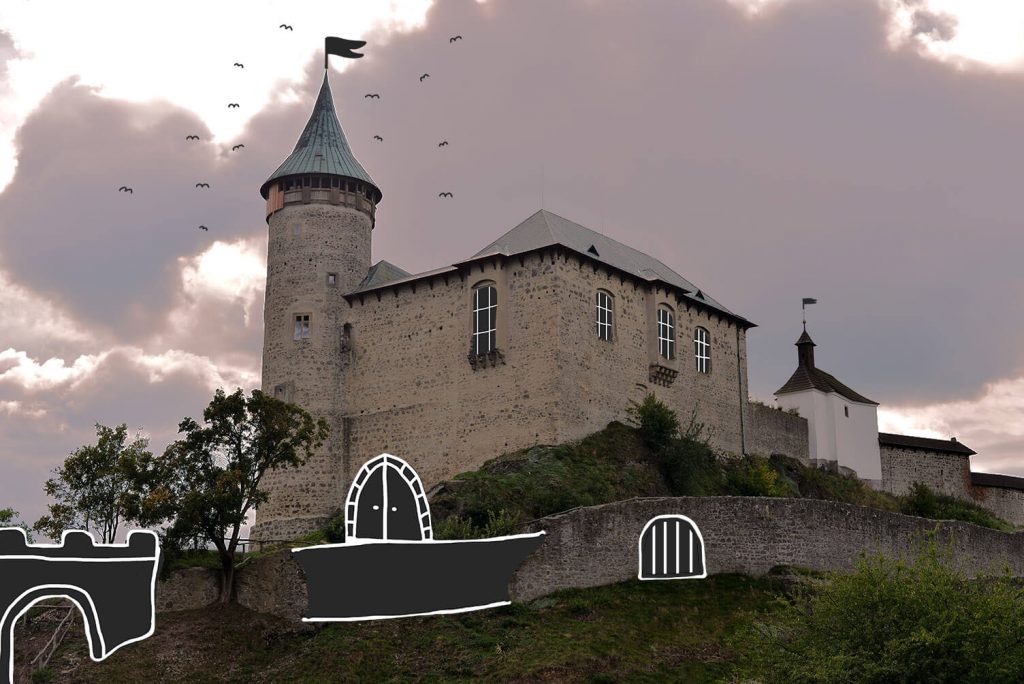Organize Your Ideas Effectively
Ideas can be communicated through various mediums, including text, sketches, paintings, or photographs. As you accumulate a substantial amount of such material, it becomes essential to store and organize it systematically. Sketchbooks, notebooks, local data storage devices, and cloud storage platforms are all effective tools for this purpose. Let us now explore in greater detail the different methods through which you can express and manage your creative thoughts.
Sketches and Notes
Although large notebooks may appear advantageous due to their capacity to accommodate more content or their perceived value for money, it is advisable to consider smaller notebooks instead. These are more portable and can easily fit into your pocket or bag, making them convenient for spontaneous idea capture. Additionally, graph paper can be particularly useful for outlining levels, as it enables accurate sketches without requiring a ruler. It is not necessary to possess advanced drawing or painting skills in this context—your primary objective is simply to externalize your ideas onto paper.
Keep a notebook, notepad, or sketchbook in the place where you spend most of your time, or carry it with you whenever possible. Creative inspiration can arise at any moment, including during the night when you wake up. In such cases, it is preferable to write on paper rather than using a smartphone, as the screen can strain your eyes and disrupt your ability to fall back asleep. When noting your ideas in a notebook or notepad, there is no need to organize them immediately. Simply record them as they occur to you. Attempting to organize them in real-time may cause you to forget key details. Think of your notebook or notepad as a temporary repository, since you will later need to rewrite, refine, and consolidate your ideas into a centralized document—your game design document.
Photos
There may be instances in which you are captivated by a particular scene, yet unable to sketch or paint it for various reasons. In such situations, having a smartphone or camera readily available allows you to quickly capture the scene with a photograph. Keep in mind that taking photographs is easy, and you can build your own reference library quite rapidly. However, be cautious not to take an excessive number of images of a single scene. A single well-composed photo is far more valuable than several mediocre ones and will save you time when browsing through your reference collection.
If you choose to invest in a camera, consider purchasing a compact model. While it may not match the image quality of larger cameras, its portability makes it far more practical. Larger cameras with bulky lenses can indeed produce superior results, but such high-end equipment is often unnecessary. Remember: the best camera is the one you have with you—not the one left behind due to its size or weight.
Sound Libraries
At times, you may wish to capture a specific soundscape that evokes a desired atmosphere or mood. Creating your own sound library is relatively straightforward. A compact, pocket-sized audio recorder—or even a smartphone—will generally suffice for this purpose. While the audio quality may not be of professional-grade clarity, high-end recording equipment is not a prerequisite. If you set out to record a particular soundscape, be sure to take a photograph of the location or, at the very least, jot down relevant details. This will help you recall the context of the recording at a later stage.
Collages
A collage created by merging a photograph of a castle with hand-drawn elements.
Game Design Document
It is essential to eventually consolidate all your ideas in a single location. Relying on multiple notebooks and notepads throughout the game development process would be highly inefficient. Therefore, create a game design document where you transfer the ideas previously recorded in your notes. Ensure that this document remains practical and focused by including only compatible and actionable concepts. Ideas that do not align with the current project can be stored in a separate document for potential future use.
Structure the game design document into chapters, and allocate each idea to the most relevant section. Describe each game element in a single location within the document, and refer back to it as needed to avoid repetition. Begin with a simple approach, without striving to describe each idea in exhaustive detail initially. Use paragraphs, and where appropriate, introduce numbered or bulleted lists. This approach enhances the readability of the document and facilitates easier navigation, particularly when sharing your ideas with others.
For additional information on how to create a game design document, please refer to the section titled Game Design Document.

